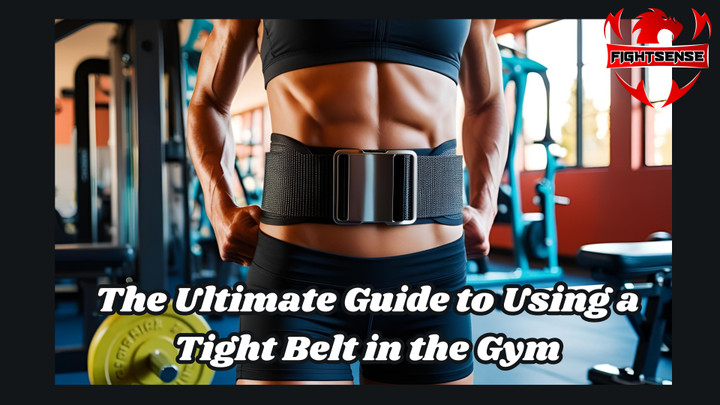The Ultimate Guide to Using a Tight Belt in the Gym
20th Mar 2025
For weightlifters and strength trainers trying to maximize stability and core involvement, a belt is a necessary gym tool. Better support, more lifting efficiency, and lower injury risks come from a tight lifting technique.
Key Highlights
-
Tight belts aid to preserve intra-abdominal pressure, so enhancing stability and lifting strength.
-
Lessens Damage Risks In particular, lessens tension on the lower back during large lifts.
-
For squats, deadlifts, and presses, correct bracing and posture encourage lifting efficiency.
-
Avoiding over-reliance on outside help requires proper application to prevent weakening of fundamental muscles.
-
Lever, prong, Velcro, and neoprene belts have special advantages depending on the type of training you do.
What is a Tight Belt?
A tight is a weightlifting tool meant to steady the lower back and core during big lifts. Belted lifting increases lifting ability by helping to sustain intra-abdominal pressure, thereby lessening strain on the spine.
Why Use in Gym?
-
Improves central strength and stability
-
lessens lower back strain and injury risk
-
Improves posture when heavy lifting
-
Increases intra-abdominal pressure to improve bracing
-
Gives mental assurance underweight.
Where to Use ?
-
Heavy Weightlifting and heavy compound motions
-
Deadlifts, squatters, and overhead presses
-
Olympic weightlifting and strength contests
-
Sessions of high intensity strength training
How to Use Correctly?
-
Select appropriate material and size.
-
Position it tightly around the lower abdomen.
-
Breathe deeply into your stomach then brace
-
Steer away from over tightening to let natural mobility.
-
Use just during highest or almost maximum lifts.
When Should You Use ?
-
When increasing weight lifting above 75–80% of your one-rep maximum
-
Between sets of deadlifts, hard squats, and presses,
-
If recuperating from a modest lower back ailment (see a specialist)
-
Training for strongman contests or powerlifting
Advantages
-
Gives spine stability and support.
-
Boosts confidence and lifting performance.
-
Promotes correct bracing technique
-
Lessens back tiredness
Disadvantages
-
Dependency too much on one can weaken fundamental muscles.
-
Tight belting done incorrectly can limit respiration.
-
Might be uncomfortable if not correctly adjusted.
-
Not appropriate for any kind of instruction
Types
-
Lever Belts: With changeable levers, offer ideal security.
-
Prong belts: classic style with many adjusting points.
-
Velcro Belts: Simple and lightweight adjustability
-
Neoprene belts: More flexible yet less supporting are.
Shop Now !
Conclusion
For those who do heavy lifting at the gym, a belt is quite helpful. Correct tight belting can improve lifting technique, lower injury risks, and increase performance. Using a tight belt improperly, however, might cause over-reliance and lower core strength.
Always guarantee correct use to optimize advantages without endangering safety.
Disclaimer
This page serves only for informative needs. Before wearing a tight belt during an exercise session, always see a fitness expert. Inappropriate use could cause damage.
FAQ
1. Should first-time users wear a tight belt?
First priorities for beginners should be developing core strength. For heavier lifts, a tight belted approach helps; for light training, it is not essential.
2. Could always wearing a tight be detrimental?
Definitely yes. Overuse of a tight belt can gradually weaken core muscles, rendering you dependent on outside help.
3. Just how tight should my gym belt be?
It should be fitting yet not constrictive. Good tight belting lets you keep core pressure while breathing deeply.
4. Are all of the belts the same?
Not yes. From lever belts to prong belts, every kind of tight belt has special advantages and serves different functions.
5. Would a tight belt help me to perform deadlift and squat?
indeed. Better stability from a tight belted squat or deadlift lets you safely raise more weight.

